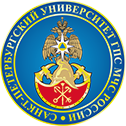Russian Federation
Russian Federation
. Using methods of regression analysis and neural network research, it was possible to preserve the physical properties of water-gene compositions and ensure a minimum time for extinguishing a fire in a model fire with components of industrial explosives. Neural network modeling was performed in the STATISTICA Application 10 program. The maximum discrepancy between the results of the neural network model and experimental data is 0,18 %. Regression analysis was performed in the REGRAN program. The maximum error in target results was 4,4 %. Analysis of experimental data and mathematical modeling results showed that the most significant properties of fire extinguishing agents based on hydrogels, providing minimal extinguishing time, are density and surface tension. The concentrations of the gelling agent were determined at which the water-gel composition acquires optimal physical properties for extinguishing a model outbreak of a component of an industrial explosive. Recommendations have been developed for creating hydrogel formulations with desired properties.
regression analysis, neural network modeling, firefighting, industrial explosives
1. Buchel'nikov D.Yu., Buchel'nikov S.Yu. Tushenie pozharov na ob"ektah s nalichiem vzryvchatyh veshchestv i materialov: ucheb.-metod. posobie. Ekaterinburg: filial Akad. GPS MCHS Rossii, 2002. 64 s.
2. Vlasov D.A. Vzryv i ego posledstviya: ucheb. posobie. SPb.: S.-Peterb. gos. tekhnol. in-t (tekhn. un-t), 2001. 151 s.
3. High-power acoustic fire extinguisher with artificial intelligence platform / J. Wilk-Jakubowski [et al.] // International Journal of Computational Vision and Robotics. 2022. Vol. 12. № 3. P. 236–249.
4. Use of fire-extinguishing balls for a conceptual system of drone-assisted wildfire fighting / B. Aydin [et al.] // Drones. 2019. Vol. 3. № 1. S. 17.
5. Voroncov T.S., Ivanov A.V. Issledovanie fiziko-himicheskih svojstv vodnogelevyh ognetushashchih sostavov v usloviyah likvidacii goreniya promyshlennyh vzryvchatyh veshchestv i ih komponentov // Sovremennye problemy grazhdanskoj zashchity. 2022. № 2 (43). S. 50–58.
6. Mihajlova V.I., Skripnik I.L., Ivanov A.V. Modelirovanie sistem orosheniya rezervuarov nefteproduktov v usloviyah primeneniya modificirovannyh vodnogelevyh sostavov // Problemy upravleniya riskami v tekhnosfere. 2019. № 4. S. 51–60.
7. Issledovanie ognetushashchih i teplozashchitnyh svojstv vodnogelevyh sostavov na osnove modificirovannyh nanozhidkostej / Sh.G. Gadzhiev [i dr.] // Nauch.-analit. zhurn. «Vestnik S.-Peterb. un-ta GPS MCHS Rossii». 2014. № 2. S. 31–37.
8. Issledovanie ognetushashchih svojstv vody i gidrogelej s uglerodnymi nanostrukturami pri likvidacii goreniya nefteproduktov / A.V. Ivanov [i dr.] // Pozharovzryvobezopasnost'. 2017. T. 26. № 8. S. 31–44.
9. Borovikov V.P. Nejronnye seti STATISTICA Neural Networks: metodologiya i tekhnologiya sovremennogo analiza dannyh. M.: Izd-vo Goryachaya Liniya-Telekom, 2008. 392 s.
10. Tarancev A.A. Principy postroeniya regressionnyh modelej pri iskhodnyh dannyh s nechetkim opisaniem // Avtomatika i telemekhanika. 1997. № 11. S. 215–219.
11. Nirkhi S. Potential use of artificial neural network in data mining // The 2nd International Conference on Computer and Automation Engineering (ICCAE). IEEE, 2010. T. 2. P. 339–343.
12. Sadeghi-Naini A., Asgary A. Modeling number of firefighters responding to an incident using artificial neural networks // International Journal of Emergency Services. 2013. Vol. 2. № 2. P. 104–118.
13. Sposob i ustrojstvo upravleniya fiziko-himicheskimi processami v veshchestve i na granice razdela faz: pat. 2479005 Ros. Federaciya / G.K. Ivahnyuk, V.N. Matyuhin, V.A. Klachkov, A.O. Shevchenko, A.S. Knyazev, K.G. Ivahnyuk, A.V. Ivanov, V.A. Rodionov. – № 2011118347/08; zayavl. 21.01.2010; opubl. 10.04.2013, Byul. № 10.
14. Bosikov I.I., Klyuev R.V., Dmitrak Yu.V. Analysis of hazardous processes in the natural-industrial system // Advances in raw material industries for sustainable development goals. CRC Press, 2020. P. 422–429.
15. Nutrient requirement equations for Indian goat by multiple regression analysis and least cost ration formulation using a linear and non‐linear stochastic model / V. Patil [et al.] // Journal of Animal Physiology and Animal Nutrition. 2022. Vol. 106. № 5. P. 968–977.
16. Bohidar N.R., Restaino F.A., Schwartz J.B. Selecting key pharmaceutical formulation factors by regression analysis // Drug Development and Industrial Pharmacy. 1979. Vol. 5. № 2. P. 175–216.







